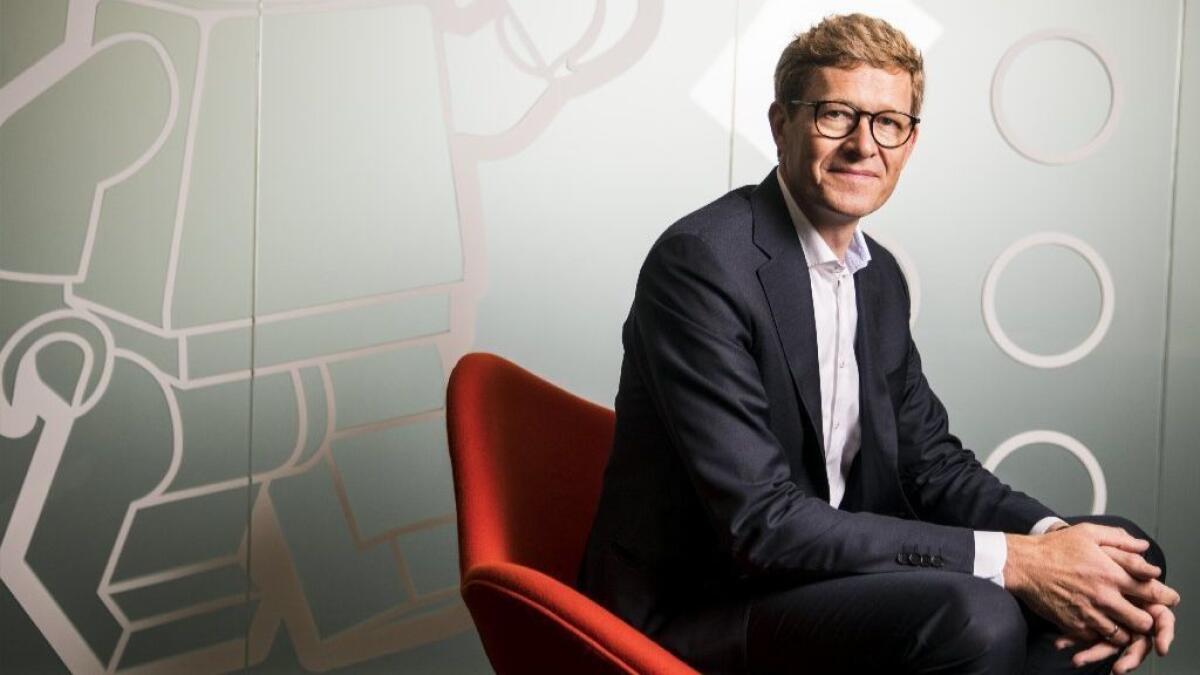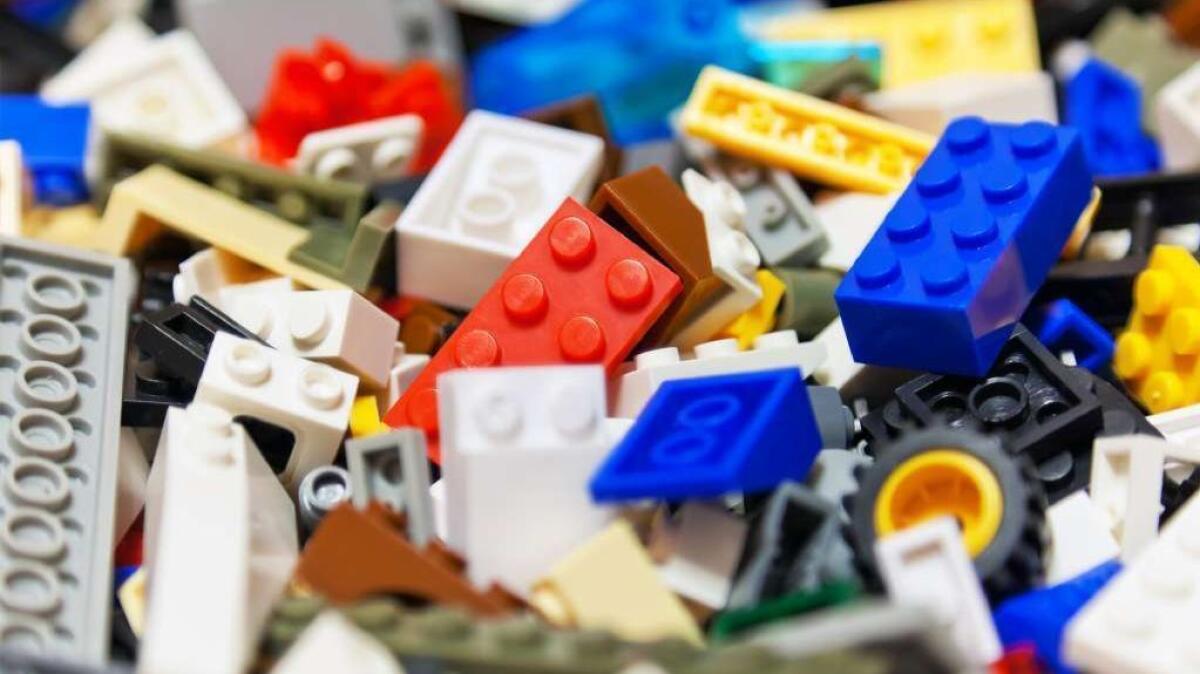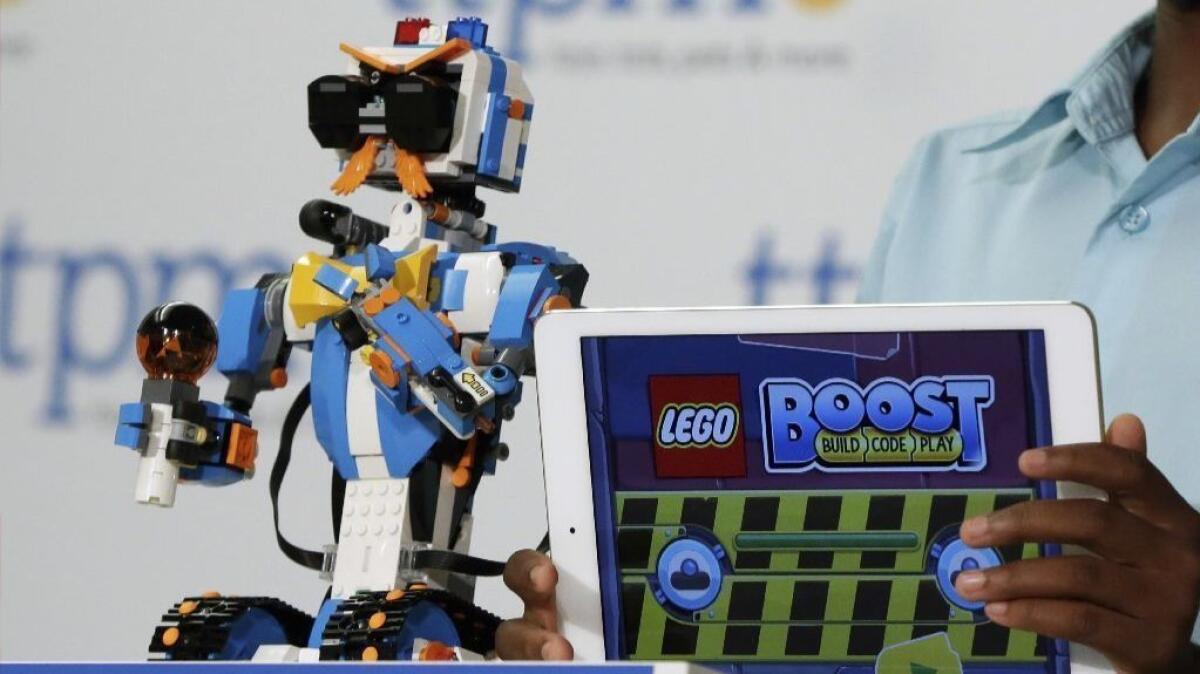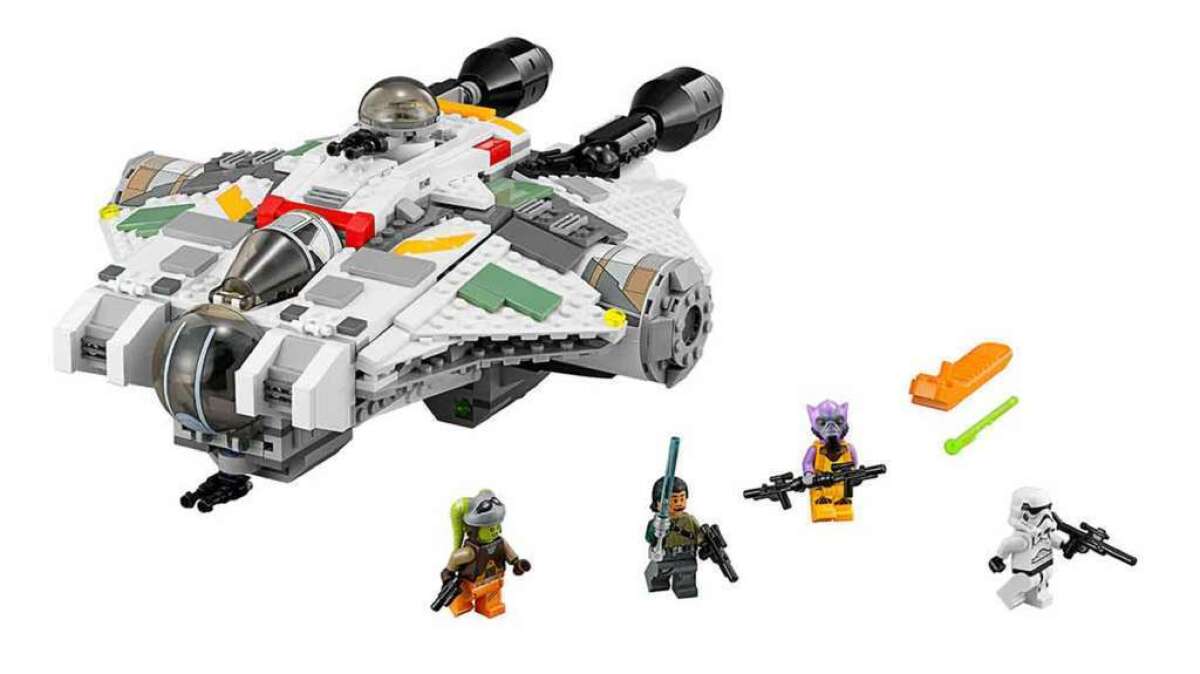Q&A: New Lego CEO takes on rebuilding the battered toy company, brick by brick

- Share via
There’s trouble in toyland, and Lego Group, the longtime Danish maker of plastic brick sets and swivel-arm toy characters for kids, hasn’t been exempt.
After years of heady growth, Lego stunned the industry in September when it said its first-half 2017 sales fell for the first time in more than a decade. The privately held firm also cut 1,400 jobs, or nearly 8% of its global workforce, to adapt to the slowdown.
Sales for the full year ultimately dropped 7% to $5.8 billion, excluding currency fluctuations (Lego toys are sold in 123 countries). And the demise of giant retailer Toys R Us Inc. only added to the pressure. Lego’s rivals Mattel Inc. and Hasbro Inc. also have struggled with slowing sales growth.
Amid all this, Lego last fall named a new chief executive, Niels Christiansen, to turn things around. The 52-year-old Dane had been CEO of the Danish industrial group Danfoss.
Christiansen is known for being digitally savvy, which could be a key asset because kids are increasingly spending more time with tablets, smartphones and other digital technology either with, or in place of, conventional toys.
During a recent visit to Lego’s office in Hollywood, Christiansen talked about the headwinds facing Lego and the toy industry. (The Legoland theme parks and discovery centers around the world, including in Carlsbad, are based on Lego Group trademarks but are owned and operated by Britain’s Merlin Entertainments Group.) Here’s an excerpt of the interview, which was edited for space and clarity:
The U.S. market accounts for what percentage of your total sales?
It’s in the 15% to 20% range.
What is the size of your U.S. workforce?
Out of the 17,000 global company workforce, it’s a bit more than 2,000 in the U.S.

Lego’s executive chairman, Jorgen Vig Knudstorp, has said Lego simply didn’t have toys that were popular enough to keep sales growing last year. Is that the case?
There’s going to be some uncertainty about whether we can provide the innovation; that we can hit the themes that are cool and right for kids right now. That’s what we’re putting a lot of emphasis on right now to really unleash the creativity in our organization.
We’re basically changing 60% of our product line every single year. So that’s a huge task to continue to come up with toys that hit that right every single year.
We also need to see this in the perspective of Lego having had a decade of supernatural high growth. I see this as more of a consolidation phase on top of a very high growth phase.
We often hear that one reason for slumping toy sales is that kids are migrating to digital products at an earlier age. Is that true?
It’s definitely true that they have a lot of interest in iPads and tablets and digital. In our opinion it’s not an either/or. One of the big tasks ahead of us, innovation-wise, is to provide the blend between digital and physical play.
I wouldn’t say it’s taking away from physical toys; it’s expanding that. We don’t look at the world as only physical or only digital. We just need to incorporate digital into our play experience and that’s where a lot of our innovation goes these days.

How is Lego doing that so far?
There is Lego Boost, where you learn how to code and program on a digital tablet or whatever to make the physical toy work. It also could be Duplo trains or City trains for older kids, where you control and steer from your digital tablet, but it’s actually running in the physical world.
Even a 3-year-old can control a Duplo train from the iPad. And we can do that in a much more advanced way with some of our Technic products or with the Lego City Train for 10- or 12- or 13-year-olds.
We also launched an augmented reality kit in December that allows people to overlay physical play of Lego toys with augmented reality.
But the idea of building a toy with iconic Lego bricks remains intact?
The Lego brick experience is different. You can build it from the instructions and get that learning and the exciting experience of actually creating something. Then you can role play with it, like you can with a lot of toys, and then you can take it apart and you have unending opportunities. Only your imagination sets the limit for what you do after that.
That’s combined with a very high-quality toy, a very safe toy that will last for generations. That’s a unique proposition for a toy and that’s what we need to live up to.
What percentage of Lego’s sales had gone to Toys R Us, and can you replace those sales with sales to other retailers?
We’re talking a 5% to 7% customer. We’re working very closely with the other retail partners now. They’re quite confident and they have plans in place that they can pick up a lot of the sales that used to go through Toys R Us. We may not get it all back, but we will get a very big part of that in other channels, in our own channels and e-commerce.
The second half of this year is going to show how that plays out.

Many popular toys are based on popular movies. Will Lego compete to keep acquiring toy rights to those films?
We’ve been working closely with the likes of Disney for 20 years. And we brought, in many ways, Star Wars to life for many kids. It’s going to continue to be very important. You’ll never see one toy company having all the intellectual property.
You reached out for this job. Why?
Lego is an awesome company, a very special company. When you talk about mission- and purpose-driven companies, in my mind Lego is the prime example of that in the world. The purpose of making children smile and play and grow and learn, in my mind, it doesn’t get any better.
Inside the business of entertainment
The Wide Shot brings you news, analysis and insights on everything from streaming wars to production — and what it all means for the future.
You may occasionally receive promotional content from the Los Angeles Times.








